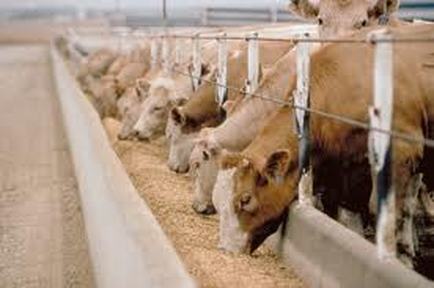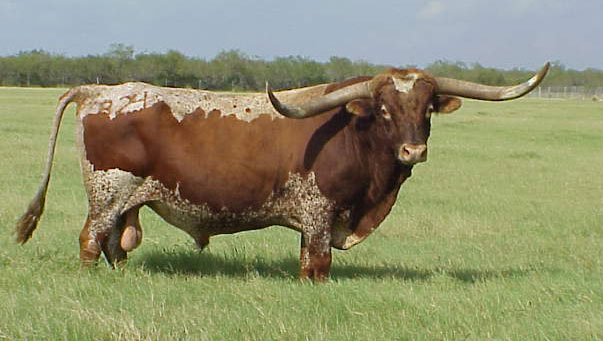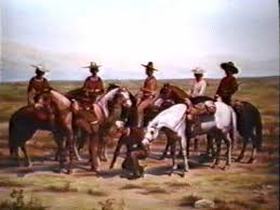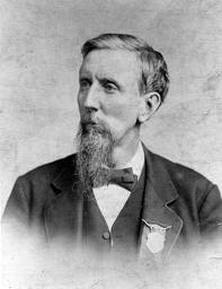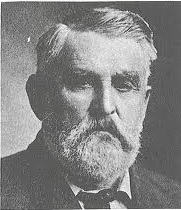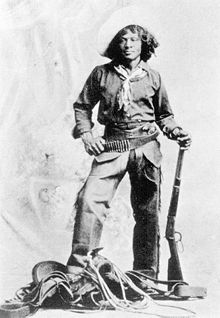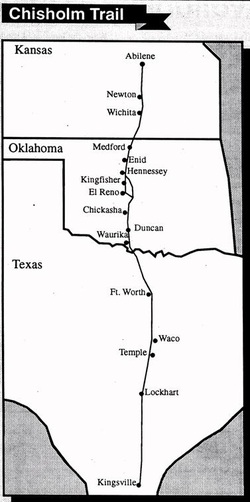Factors of the Cattle Boom- The largening economy and population was demanding beef after the Civil War.
- A new type of cattle named the Texas Longhorn was bred. It had horns of tremendous length and could withstand creul conditions. It did not produced much beef, but ranchers liked their toughness. - Ranchers profitted from selling cattle to areas of the country who couldn't access them as easily. In Texas, a state where cattle are abundant, a longhorn could be bought for three to six dollars. In Kansas, a state where there were few cattle, a longhorn could be bought for 38 dollars. In New York, a state that had no cattle, a longhorn could be bought for 80 dollars. - Cattle could be shipped easily after Joseph McCoy's idea in 1867. He constructed housing for cattle in areas near railroads. This way, herds could be shipped by rail and sold to areas with few cattle. |
Factors of the Cattle Bust- Competitions between ranchers grew. They often fought over land for grazing. When barbed wire was invented, many ranchers marked off the territories and water sources that they wanted to keep for themselves. Range wars, or "battles among large ranchers, small ranchers, and farmers", broke out.
- Sheep began to multiply, and sheep demolished grass very quickly. With grass diasappearing, cattle had little to eat. Ranchers lost money because they had to buy bulks of feed to give the cattle the nutrients that they needed. -Harsh winters and severe weather conditions took the lives of cattle. Thousands of them were killed. Sometimes, 30% of a herd could be eliminated. With the numbers of ranchers' herds decreasing, many ranchers went bankrupt. |
The Cowboy Lifestyle
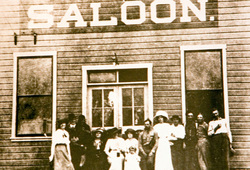
The cowboy lifestyle dangerous and unpredictable. They dealt with thieves, cruel weather conditions, and large herds of cattle. Many cowboys enjoyed their jobs, though their pay was little.
Ranchers had to be versatile in skill. Mary Jaques stated that "The ideal ranchman must be butcher, baker, carpenter, blacksmith, plain cook, milker... It is a face that each of these trades will have to be practiced to some extent sooner or later."
Cowboys who made the daring cattle drives suffered. The journeys could last months. They lived with no shelter, and weather was harsh. Some cattle ran away during stampedes, and they had to be found. They could not sleep at night; their herds had to be watched.
As cowboys traveled through towns businesses were established to provide housing and other luxuries to them. Restaurants, saloons, and hotels were available to travelers. Violent behavior was common, so law officials policed cattle towns.
Ranchers had to be versatile in skill. Mary Jaques stated that "The ideal ranchman must be butcher, baker, carpenter, blacksmith, plain cook, milker... It is a face that each of these trades will have to be practiced to some extent sooner or later."
Cowboys who made the daring cattle drives suffered. The journeys could last months. They lived with no shelter, and weather was harsh. Some cattle ran away during stampedes, and they had to be found. They could not sleep at night; their herds had to be watched.
As cowboys traveled through towns businesses were established to provide housing and other luxuries to them. Restaurants, saloons, and hotels were available to travelers. Violent behavior was common, so law officials policed cattle towns.
Cattle Being Shipped by Railroad
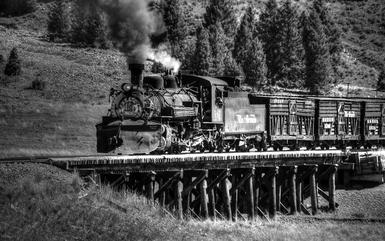
Effects of Railroads
Around 1867, cattle pens were constructed around railroads to make shipping herds easier. Risky cattle drives to the North decreased as railroads developed. With the task of transporting cattle to the North easier, more could be sold in areas of the country where they were scarce. Ranchers earned higher incomes with the establishment of railroads.
Economic Advantages- Since beef was in high demand after the Civil War, cattle could be sold for high prices in the North and the East.
- Herds of cattle could be shipped easily with the assistance of railroads, therefore ranchers profited from their cattle sales. - The ranchers paid their cowhands little money; they paid little for manuel labor and assistance with herding. |
Economic Disadvantages- Ranchers had to buy rights to water sources their and surrounding land for their cattle. Buying these ranges cut their competition, but the water was often scarce.
- When severe weather hit the Great Plains, many cattle were killed. Ranchers lost thousands of cattle and their herd size decreased. When they lost cattle, they had fewer to sell and breed for profit. - Much of the grass on the Great Plains had been eaten by earlier cattle and sheep, so the remaining cattle had nothing to provide themselves with. Ranchers lost money by spending it on feed for their large herds. |
Cattle Eating Feed
